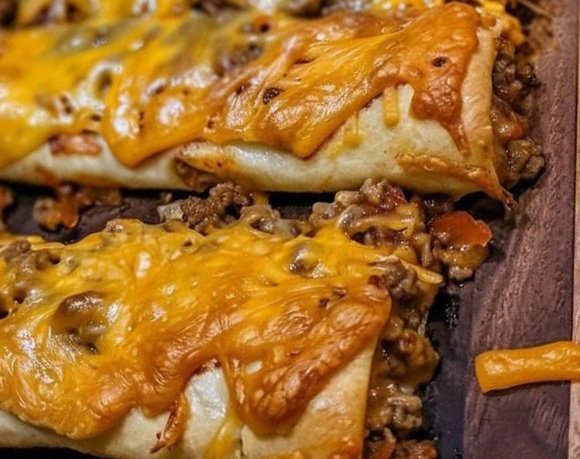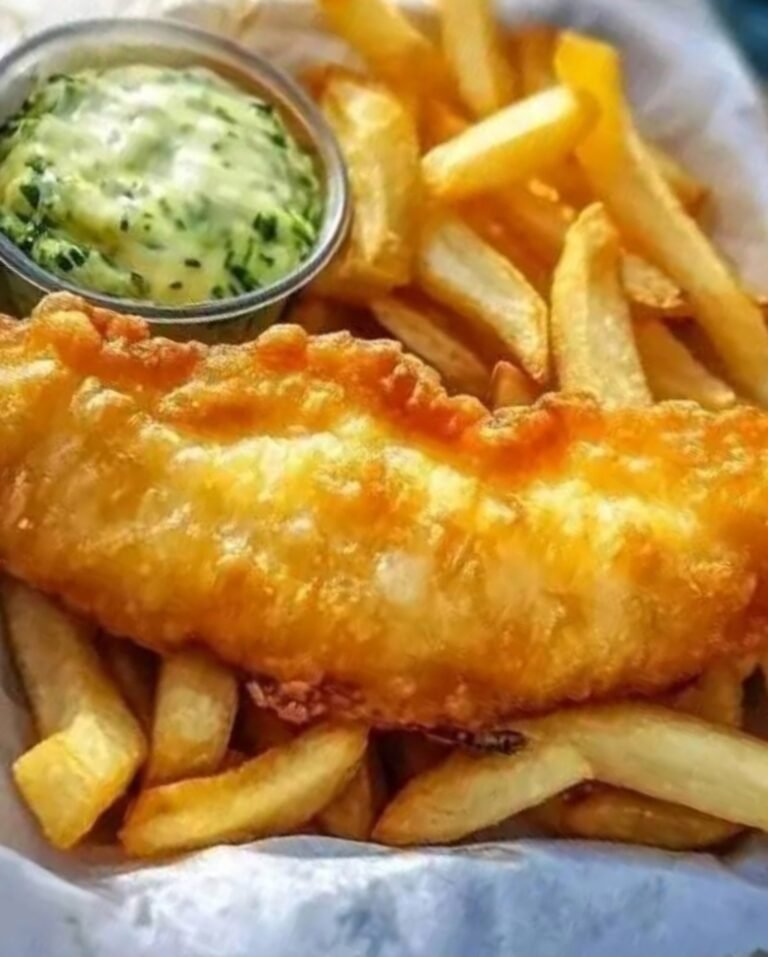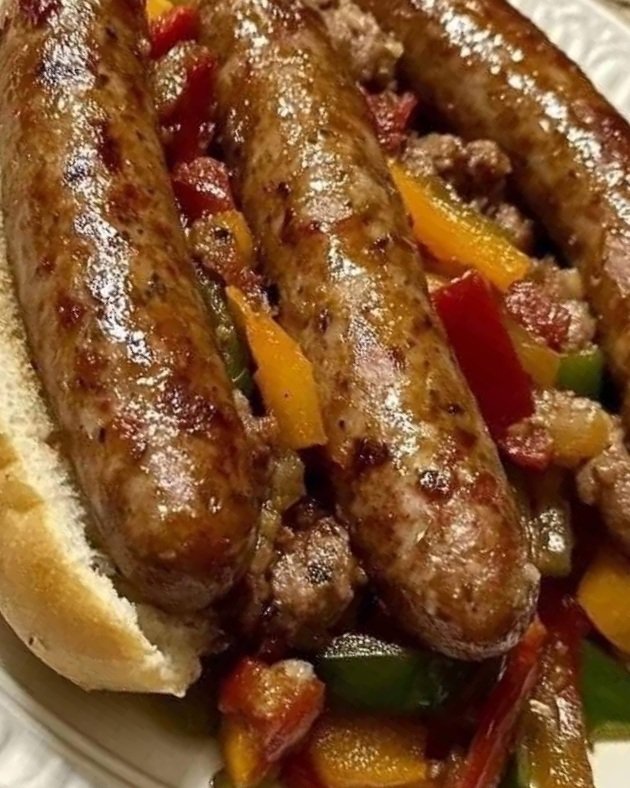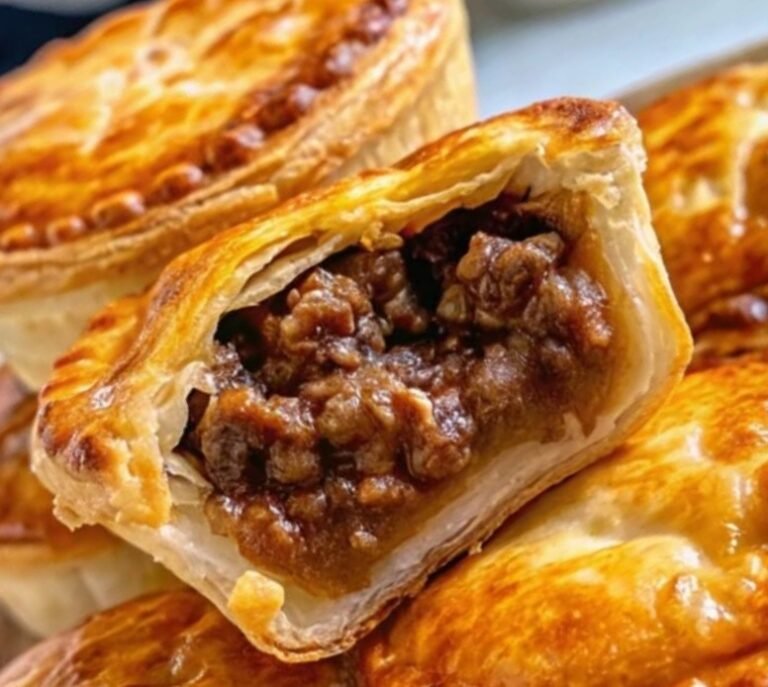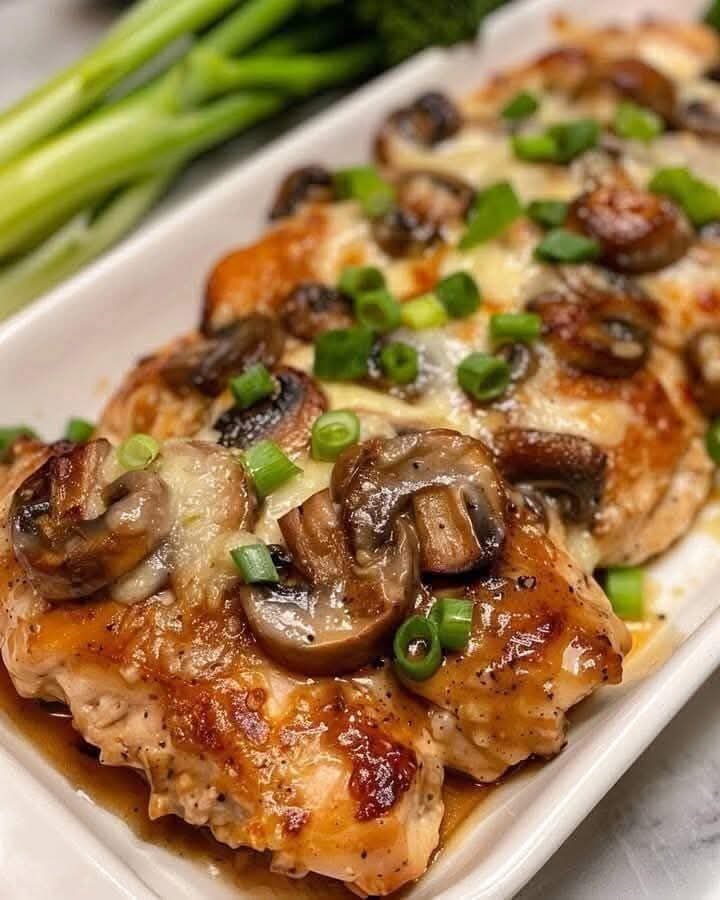Classic British Fish, Chips, and Extra Crispy Bits 🐟🍟
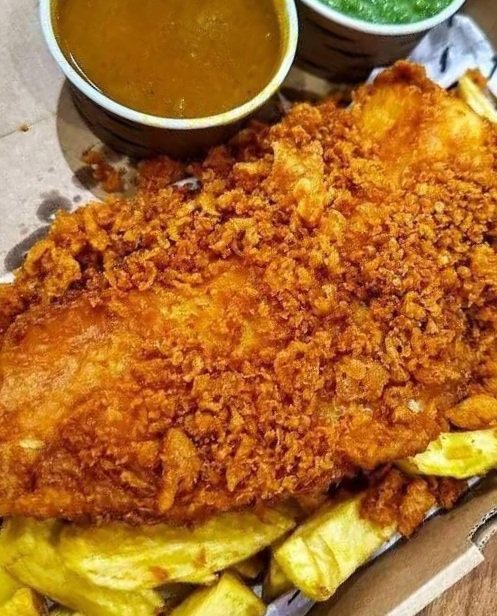
Nothing says British comfort food quite like a plate of golden, crispy fish and chips, complete with those irresistible crunchy batter scraps—affectionately known as “crispy bits.” This timeless dish brings the charm of a seaside chippy right to your kitchen. With flaky white fish enveloped in a light, airy batter, thick-cut fries fried to perfection, and those delightful extra crispy morsels, this recipe will transport you to a cozy British pub or a breezy coastal town. Whether you’re a seasoned cook or a first-timer, this guide will walk you through creating an authentic fish and chips experience at home, complete with tips for that perfect crunch and suggestions for serving it just right.
Why Fish and Chips?
Fish and chips is more than just a meal—it’s a cultural icon. Born in the working-class neighborhoods of 19th-century Britain, this dish became a staple for its affordability, heartiness, and downright deliciousness. The combination of tender, flaky fish, a crisp batter, and golden, fluffy-on-the-inside fries is pure magic. And let’s not forget the crispy bits—those golden nuggets of fried batter that add an extra layer of indulgence. This recipe stays true to tradition while offering a few modern tips to ensure your fish and chips are restaurant-quality, right from your own kitchen.
Ingredients (Serves 4)
For the Fish:
- 4 white fish fillets (cod, haddock, or pollock, about 6-8 oz each), patted dry
- 1 ½ cups all-purpose flour (plus extra for dusting)
- 1 tsp baking powder
- 1 tsp salt
- ½ tsp black pepper
- 1 cup ice-cold beer (lager works best) or club soda for a non-alcoholic option
- 1 tbsp cornstarch (for extra crispiness)
For the Chips:
- 4 large Russet potatoes (about 2 lbs), peeled and cut into thick fries (about ½-inch wide)
- Vegetable oil or peanut oil (enough for deep frying, about 2-3 quarts)
- Sea salt, to taste
For the Crispy Bits:
- Leftover batter from the fish
- Optional: a pinch of paprika or garlic powder for extra flavor
To Serve:
- Malt vinegar (a must for authenticity!)
- Sea salt
- Optional: tartar sauce, mushy peas, or lemon wedges
Equipment Needed
- Deep fryer or large, heavy-bottomed pot
- Thermometer for checking oil temperature
- Slotted spoon or spider strainer
- Wire rack or paper towels for draining
- Mixing bowls
- Tongs
- Large baking sheet
Step-by-Step Instructions
Step 1: Prepare the Chips
The secret to perfect British chips is the double-fry method, which gives them a fluffy interior and a crisp, golden exterior. Start by peeling your Russet potatoes and cutting them into thick, uniform fries—about ½-inch wide for that classic chippy style. Rinse the cut potatoes under cold water to remove excess starch, which helps achieve maximum crispiness.
Place the fries in a large pot of cold, salted water and bring to a gentle boil. Parboil for 4-5 minutes, just until the edges soften slightly but the fries hold their shape. Drain thoroughly and spread them out on a clean kitchen towel or paper towels to dry completely—any moisture will cause the oil to splatter and prevent crispiness. Let them air-dry for at least 30 minutes (or pop them in the fridge for up to a few hours).
Heat your oil to 325°F (160°C) in a deep fryer or large pot. Working in batches, fry the potatoes for 4-5 minutes until pale and slightly softened but not browned. Remove with a slotted spoon and place on a wire rack or paper towels to drain. Set aside for the second fry later.
Pro Tip: Drying the potatoes thoroughly is key to avoiding soggy fries. For extra crispiness, toss the parboiled fries in a tablespoon of cornstarch before the first fry.
Step 2: Make the Batter
A light, crispy batter is the heart of great fish and chips. In a large mixing bowl, whisk together 1 ½ cups flour, baking powder, salt, black pepper, and cornstarch. The cornstarch is a game-changer for extra crunch. Slowly pour in the ice-cold beer or club soda, whisking gently until the batter is smooth and slightly runny, like pancake batter. The cold liquid helps create a light, airy texture when fried.
Cover the batter and refrigerate for 15-20 minutes to keep it chilled—this ensures the batter adheres well to the fish and puffs up beautifully in the hot oil. If the batter thickens too much, add a splash more liquid before using.
Pro Tip: Keep the batter cold by placing the mixing bowl over a larger bowl filled with ice while you work. Warm batter can lead to a dense, greasy coating.
Step 3: Fry the Fish
Pat the fish fillets dry with paper towels and lightly dust with flour—this helps the batter stick. Heat the oil to 350°F (175°C). Dip each fillet into the chilled batter, letting excess drip off, and carefully lower into the hot oil. Fry 2 fillets at a time to avoid overcrowding, which can lower the oil temperature and make the batter soggy.
Cook for 5-7 minutes, turning once, until the batter is golden and crispy and the fish is cooked through (internal temperature should reach 145°F/63°C). Remove with a slotted spoon and place on a wire rack to drain excess oil. Sprinkle lightly with sea salt while still hot.
Pro Tip: Test the oil temperature with a small drop of batter before frying the fish. It should sizzle and float immediately without burning.
Step 4: Create the Crispy Bits
Those extra crispy bits are what make this dish a true chippy experience! After frying the fish, take the leftover batter and drizzle small spoonfuls into the hot oil (still at 350°F/175°C). Fry for 1-2 minutes until golden and crisp, stirring gently to prevent sticking. Scoop out with a slotted spoon and drain on paper towels. For a flavor twist, sprinkle the bits with a pinch of paprika or garlic powder while hot.
Pro Tip: Don’t skip the crispy bits—they’re like the cherry on top of your fish and chips sundae!
Step 5: Double-Fry the Chips
Crank the oil temperature up to 375°F (190°C) for the second fry. Add the par-cooked fries back to the oil in batches and fry for 3-4 minutes until golden and irresistibly crunchy. Remove and drain on a wire rack or paper towels, then season generously with sea salt.
Pro Tip: Double-frying is non-negotiable for that chip-shop crunch. The first fry cooks the interior, while the second fry creates the golden crust.
Step 6: Serve It Up
Arrange the golden fish fillets, crispy chips, and those glorious crispy bits on a platter or individual plates. Serve immediately with a generous splash of malt vinegar and a sprinkle of sea salt. For the full British experience, add a side of homemade tartar sauce, mushy peas, or a wedge of lemon for squeezing. Wrap it all in butcher paper or newspaper (food-safe, of course!) for that authentic chippy vibe.
Serving Suggestions
- Tartar Sauce: Mix mayo, chopped pickles, capers, lemon juice, and a pinch of dill for a creamy, tangy dip.
- Mushy Peas: Simmer frozen peas with butter and a splash of cream, then mash lightly and season with salt and pepper.
- Drinks Pairing: A cold lager or a cup of strong British tea complements the meal perfectly.
- Presentation: Serve on a wooden board for a rustic look, or go traditional with a basket lined with parchment paper.
Tips for Success
- Choose the Right Fish: Cod and haddock are traditional, but pollock or tilapia work well too. Look for fresh, firm fillets with no strong fishy odor.
- Keep the Oil Hot: Use a thermometer to maintain consistent oil temperature. Too low, and your fish and chips will be greasy; too high, and they’ll burn.
- Work in Batches: Overcrowding the fryer lowers the oil temperature and leads to soggy results.
- Make It Ahead: You can parboil and do the first fry for the chips earlier in the day. Store them in the fridge until ready for the second fry.
Why You’ll Love This Recipe
This fish and chips recipe captures the soul of a British chip shop with every bite. The fish is tender and flaky, the batter is light and crunchy, and the chips are the perfect balance of soft and crisp. Those extra crispy bits add a playful touch that makes this dish feel like a treat. Whether you’re hosting a dinner party, craving comfort food, or introducing friends to a British classic, this recipe delivers authentic flavors with a homemade touch.
A Nod to Tradition
Fish and chips isn’t just food—it’s a piece of history. From its origins in London’s East End to its status as a national treasure, this dish has warmed hearts and filled bellies for generations. By making it at home, you’re not just cooking—you’re keeping a tradition alive. So grab your ingredients, heat up that oil, and get ready to enjoy a taste of Britain, complete with those irresistible crispy bits!
